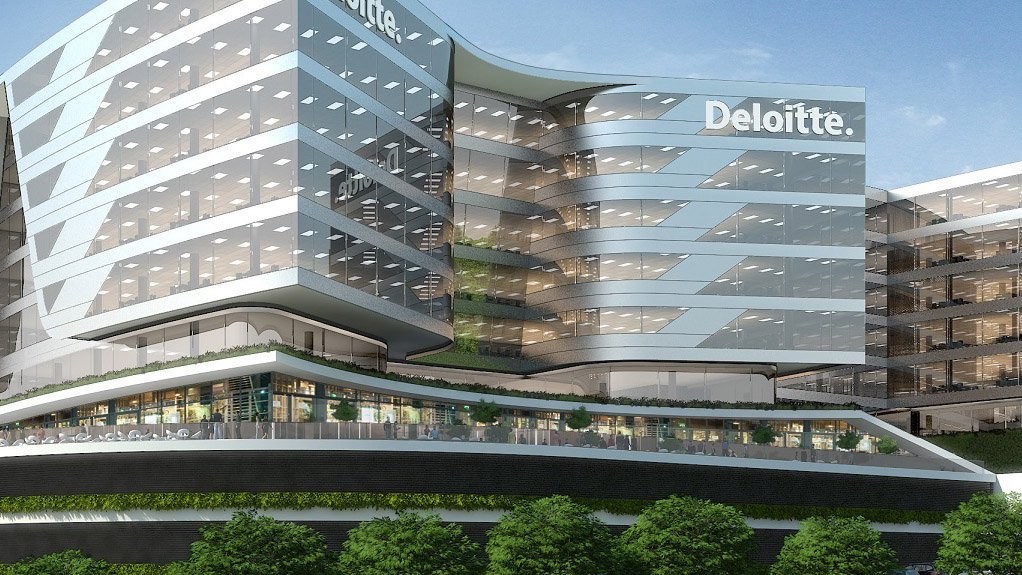The short-term mining cycle looks positive for Africa, but the continent is “way off achieving bullish growth forecasts”, largely owing to regulatory and infrastructure constraints, advisory firm Deloitte energy and resources leader Andrew Lane tells Mining Weekly.
Recent increases in commodity prices have reawakened interest in the global mining industry, he says.
South Africa, faced with political and regulatory uncertainty, has some of the oldest and deepest mines in the world and they need investment. However, if the current investment climate is not attractive, the industry will stagnate, Lane explains. “This does not necessarily mean the end of mining in South Africa. If one business fails, it can be picked up by another, which believes it can extract the commodities at a demonstrably more attractive cost.”
Nonetheless, despite uncertain prospects, Lane asserts that the continent still has many mining opportunities in places like Botswana, Angola, the Democratic Republic of Congo (DRC) and Nigeria, for example. He states that an attractive geology and regulatory certainty solidify investor confidence – if these are present, investor interest will still be captured despite the apparent challenges posed by political risk.
However, in the long term, there are many potentially disruptive factors to consider in Africa’s mining industry – the most notable of which is the increasing uptake of automation.
Mining is becoming more challenging, as remaining deposits become more difficult to access and, thereby, costlier to mine. The industry is forced to enter riskier geographies and tackle more challenging orebodies while having to cope with constantly escalating unit costs.
“We are now in a situation where we really need a step change in performance of mines to remain viable,” states Lane.
This is particularly true in South Africa, he says, noting that the current digital wave creeping across the mining industry is especially useful with regard to reducing operating costs, dramatically improving safety and boosting productivity.
Going Digital – Social Implications
Lane explains that, while it is good to talk about going digital, many do not realise that at least half of the ‘digital question’ involves people. “To make digital work, you need two things: for people’s behavior to change and a different mix of skills.”
Embracing digital involves the nature of work changing dramatically and, subsequently, the people required to complete the work, he emphasises.
“A conversation that everyone is afraid of having is on the socioeconomic outcome of digital solutions. You can implement a certain amount of skills transition and argue the macro picture that jobs will be created in other sectors. But, the mineworker drilling the rockface is probably not going to be the person operating the control room.”
Lane adds that, despite proving that embracing digital is positive, there are still people who will be disadvantaged by it. “Embracing digital is going to place pressure on the mining industry’s social impact and how it spends its ‘social money’ and procurement dollars, while ensuring that the social equation still balances.”
Supply and Demand Impact
Technological advances and innovations are also expected to affect the supply side of mining in the short term.
Rapid advancement of technologies in areas, such as renewable energy, battery storage and electric vehicles (EVs) will have a significant impact on the supply and demand of various metals and minerals, Lane explains. “One thing is for sure – EVs will use a lot of aluminium, copper, cobalt, lithium and a few other commodities.”
Most of the world’s cobalt is found in the DRC and most of the world’s lithium in China and North Korea.
The increased demand for these metals may be positive for Africa, but it is still a potential disruption to supply, as producers may struggle to meet growing demand, Lane asserts.
The Value of the Mining Indaba
The Mining Indaba provides an important platform for potential disrupters in the industry to be discussed with important stakeholders. “Its real value is that everyone is in the same place, so it is an important networking platform. The drawcard for most of the mining community is that most investors attend. It’s an opportunity for the mining companies, particularly those with projects, to engage with investors,” Lane explains.
Having attended numerous Mining Indabas, former programmes were very South Africa-focused, but effort is being made to offer a more balanced programme, he says.
Lane applauds the greater emphasis being placed on the involvement of junior mining companies at this year’s event. “The junior and midtier miners will unlock potential on this continent. If you’re trying to drive investment on the continent, it is an asset to have them present at the event.”
The Mining Indaba is primarily a branding opportunity for Deloitte, as all company clients are present. Lane says it is also important for Deloitte and its clients to engage on topical issues during the event, with clients also enjoying having access to global experts.
Edited by: Tracy Hancock
Creamer Media Contributing Editor
EMAIL THIS ARTICLE SAVE THIS ARTICLE
ARTICLE ENQUIRY
To subscribe email subscriptions@creamermedia.co.za or click here
To advertise email advertising@creamermedia.co.za or click here













